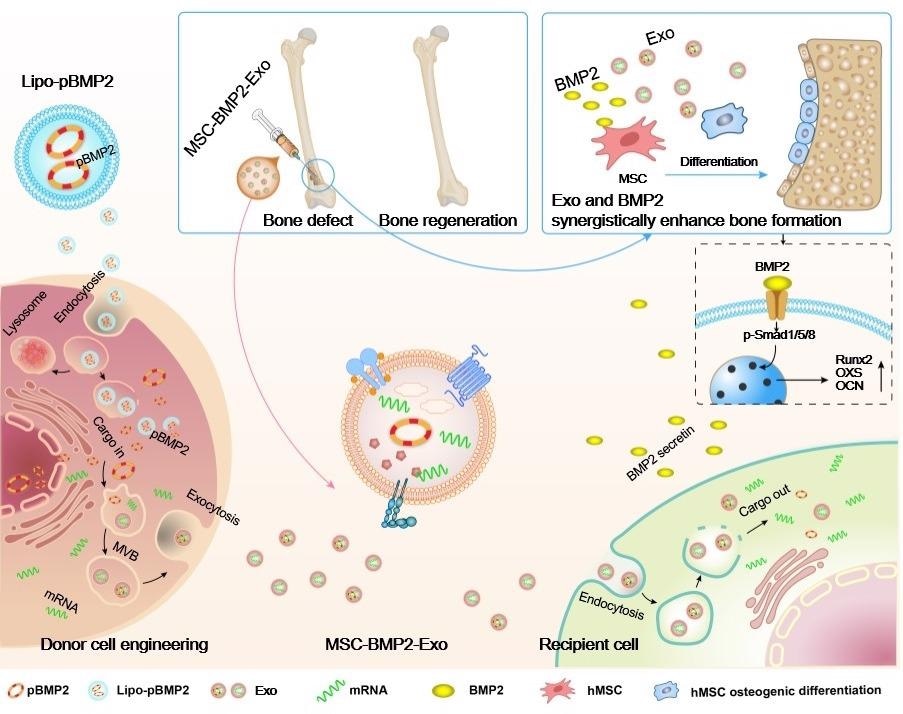Mesenchymal stem cell-derived exosomes (MSC-Exo) have gained a lot of attention due to their “cell-free” treatments.
 Exosomes derived from BMP2-engineered MSCs promote bone regeneration. Image Credit: Shenzhen Institute of Advanced Technology.
Exosomes derived from BMP2-engineered MSCs promote bone regeneration. Image Credit: Shenzhen Institute of Advanced Technology.
It offers a potential skeletal tissue regeneration method. However, MSC sources, as well as cell state, affect exosome regeneration capabilities. And, additional improvements are typically necessary.
Recently, a research team headed by Dr Xiaoli Zhao from the Chinese Academy of Sciences (CAS) Shenzhen Institute of Advanced Technology (SIAT) and collaborators from the University of Hong Kong-Shenzhen Hospital found a method for genetically engineering stem cells to generate exosomes (MSC-BMP2-Exo) with enhanced bone regeneration potency by bone morphogenetic protein-2 (BMP2).
On March 15th, the study was published in the Journal of Nanobiotechnology.
Exosomes are nano-sized vesicles that contain proteins, RNAs, and metabolites that are released by live cells. Exosomes can convey their contents to recipient cells to govern their activities and behaviors as a natural way of cellular communication. Exosomes produced by stem cells have been discovered to be an essential mediator in tissue regeneration regulation.
The researchers adapted a stem cell-mediated gene therapy (MSC-GT) method for bone regeneration in their work. MSCs that have been modified with BMP2 behave as cellular factories. These factories are capable of producing exosomes with targeted therapeutic effects.
The improved bone regeneration capability was attributable to the synergistic impact of the content obtained from MSCs and the up-regulated BMP2 gene expression, according to in vitro and in vivo experiments using the BMP2/Smad signaling pathway.
The safety of drug delivery vehicles is important, and exosomes produced by these MSCs exhibited excellent biocompatibility, in addition, plasmid DNAs only induce temporary gene expression modulation, which avoids the risks of insertional mutation.”
Dr Xiaoli Zhao, Shenzhen Institute of Advanced Technology, Chinese Academy of Sciences
A fraction of plasmid DNAs were re-encapsulated by mediator MSCs and transported to recipient cells through exosomes, according to DNA tracking.
Source:
Journal reference:
Li, F., et al. (2022) Engineering stem cells to produce exosomes with enhanced bone regeneration effects: an alternative strategy for gene therapy. Journal of Nanobiotechnology. doi.org/10.1186/s12951-022-01347-3.